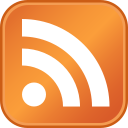RSS is a longstanding technology that provides a simple, elegant, and familiar way for users to collect and follow online activity on their own terms.
The popularity of this format has seen a revival in the past years thanks to podcasts. Artists can take advantage of the RSS and podcasts awareness and apps to promote their music through RSS feeds.
There are open source, fair and social applications that are designed to listen to podcasts but can be used to listen to music via RSS feeds as well. Check the list of recommended mobile apps and desktop readers below.
Your RSS feed
So what’s your RSS feed? It depends on where you publish your music:
- Mirlo - Artists pages have an RSS icon.
- Faircamp - A “Feed” link is automatically enabled in the main page.
- Funkwhale - Artists pages have an RSS icon.
- Bandwagon - As of 2025-04-07, the artist page doesn’t offer an RSS link, but actually there is one on
https://bandwagon.fm/@YourArtistName/feed?format=rss(substitute “YourArtistName”, keep the @). (current status) - JamCoop - add .atom to the url of artist page to get the atom feed:
https://jam.coop/artists/spadogs.atom - Mastodon - every mastodon account provides a free rss feed, including enclosures - and so does a number of other fedi software (GoToSocial, Misskey…)
- PeerTube - every peertube channel provides an rss feed automaticaly
- almost all blogging (and wiki) software provides RSS feeds, most often with good support for enclosures
- Castopod - host a podcast or create your own community of podcasters - includes ActivityPub for federation! - https://castopod.org/
- Looking for another fair and social platform? Add it here!
Anatomy of a good RSS feed
Not all RSS feeds are equal. Some allow users to listen to your music directly and hands-free, some have media like cover art embeded, some offer descriptions with rich text formatting and links… and some lack all these features.
A RSS typicaly contains a single “channel” with information about the channel (title, link, description, and optional image) and multiple “items” which are date-stamped ‘posts’ or ‘stories’ or ‘releases’.
As a music maker, these are the features you want in an RSS feed:
- A feed title with your artist name - This way people subscribing to your feed can search for it and spot it among all their RSS subscriptions. It is beneficial to also include an image (of you, your band, etc)
- Date-marked
<item>s with:- Title
- Date - publication date
- Link to the post online
- Rich text (technicaly:
<description>) - You want to keep the text formating of your original web page i.e. links and separate paragraphs. - This can already include links to a page containing your music, or even directly to audio files somewhere online. Since this is actually html, it can also include embeded content existing directly online (for example a video on a PeerTube instance, an embedable player from Bandcamp or your home page etc.) - Enclosures (technicaly
<enclosure>)- these are links to any kind of media files: release cover(s), and audio files - the idea behind the enclosures is that rss-readers and podcasting app can ‘prefetch’ this conent and is then already available to the reader/listener to immediately listen, watch, etc. This is dependent on particular apps and what is their scope - podcasting apps will probably prefetch all audio files to be ready for listening. Unfortunately RSS is not standardised fully and there’s a dissagrement if an item can have mutiple enclosures - for example multiple audio files constituting an collection of tracks in form of an album.
Using RSS to discover music
RSS feeds can be used to discover music, and therefore artists can keep them in mind to promote their music. People can ‘subscribe’ to your feed using a wide variety of apps, among them most popular are ‘feed readers’ (intended to follow a variety of blogs and/or news sources), and podcast apps. More often than not ‘feed readers’ support enclosures and can play audio files too (but may not ‘pre-fetch’ that content, but rather stream it). At the same time podcast apps will also display the ‘description’ part of the item for reading.
Open source podcast apps:
- AntennaPod (Android) - https://antennapod.org/
- Anytime (iOS) - https://anytimeplayer.app/
Feed readers:
- Feeder (open source, free, android)
- News App for Nextcloud (web/browser, android app, open source, self-hostable)
- FreshRSS (web/browser, open source, free, self-hosted)
- Mozilla Thunderbird (desktop app, cross-platform)
- NewsBlur (open source, freemium, SaaS, browser)
- Brief (FOSS, browser extension for Firefox-based browsers)
- self-hostable rss readers: YunoHost app store | Application Catalog
See also
- TSMN topics tagged with RSS
- Improving RSS feeds in social music platforms
- RSS Strategies
